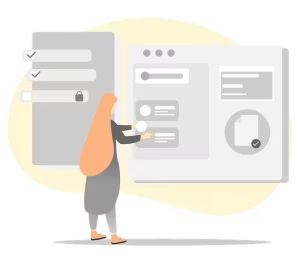In an age where data is the new currency, a staggering reality emerges: more than half of all business data goes unused for analytics. Companies are flooded with information, but a vast majority of it sits dormant, a reservoir of untapped potential. The challenge isn’t a lack of data; it’s the bottleneck in translating that raw data into actionable insights. This is where the modern enterprise falters, caught between a sea of numbers and the critical decisions that drive growth.
The solution is a transformative technology designed to bridge this gap: the business intelligence dashboard builder. This essential tool acts as the command center for your company’s metrics, converting complex data streams from sales, marketing, operations, and finance into clear, interactive visualizations.
This guide will serve as your definitive roadmap. We will deconstruct the essential components of a superior business intelligence dashboard builder, conduct a rigorous analysis of the leading platforms in the market, and provide a clear framework for selecting the ideal tool to meet your unique business needs. It’s time to unlock the power of your data and foster a culture of informed decision making.
What is a Business Intelligence Dashboard Builder? A Foundational Analysis

Understanding the core of business intelligence starts with understanding the tools that make it possible. At its heart, a business intelligence dashboard builder is a software platform that lets you connect to various data sources, pull that information together, and display it in a visual way. Think of it as an artist’s canvas, but instead of paint, you use data to create a picture of your business’s health. This isn’t just about making pretty charts; it’s about making your data talk. It allows people, even those who are not data scientists, to explore information and find answers to their questions. The right business intelligence solution empowers your entire team to see what’s happening in the business in real time.
Defining the Core Functionality
The main job of a business intelligence dashboard builder is to simplify complexity. Businesses have data everywhere. It’s in spreadsheets, in cloud applications like Salesforce, in website analytics tools like Google Analytics, and in large databases. A key function of a business intelligence platform is its ability to connect to all these different places. It acts like a universal adapter, pulling all the data into one central location for analysis.
Once the data is connected, the tool helps you create dashboards. A dashboard is a single screen that shows your most important metrics, often called Key Performance Indicators (KPIs). Instead of looking at a giant spreadsheet of numbers, you see a collection of graphs, charts, maps, and gauges. This visual approach makes it much easier to spot trends, identify problems, and see opportunities.
For example, you could have a sales dashboard that shows revenue over time, your top-performing products, and which sales representatives are closing the most deals. This is a core strength of business intelligence; it turns numbers into a story you can understand at a glance.
A critical difference between a business intelligence dashboard and a simple report from a program like Excel is interactivity. With a dashboard, you can click on a chart to dig deeper. You could click on a specific month in a sales chart to see the daily sales for that month. You could filter the entire dashboard to only show data for a specific region or product line. This ability to explore and ask follow up questions is what separates true business intelligence from static reporting. It encourages curiosity and allows users to find their own insights, a concept often called self-service business intelligence.
The “Why”: Key Business Advantages of Using a BI Dashboard Builder
Adopting a business intelligence dashboard builder is not just about upgrading your technology; it’s about upgrading your entire approach to decision making. The benefits ripple across the organization. One of the biggest advantages is the democratization of data. In the past, if a marketing manager wanted to understand campaign performance, they would have to ask a data analyst for a report. This process could take days or even weeks.
With a self service business intelligence tool, that same manager can now access a dashboard and find the answers themselves in minutes. This frees up data analysts to work on more complex problems and empowers the marketing manager to make faster, better-informed decisions.
This speed leads to another key advantage: accelerated decision making. The business world moves fast. An opportunity that exists today might be gone tomorrow. Real time business intelligence dashboards allow leaders to monitor their KPIs constantly. If sales suddenly drop, they can see it immediately, investigate the cause, and take action. Without a dashboard, they might not notice the problem for weeks, by which point it could be too late to fix.
Furthermore, a good business intelligence strategy improves data governance and creates a single source of truth. When different departments pull data from different sources and use their own spreadsheets, you often get conflicting numbers. The marketing team’s revenue numbers might not match the finance team’s numbers.
A business intelligence dashboard builder solves this by connecting everyone to the same, verified data sources. When everyone in the company is looking at the same data, you eliminate confusion and can have more productive conversations focused on strategy rather than arguing about whose numbers are correct. This centralized approach is a cornerstone of effective business intelligence.
10 Must-Have Features in a Modern BI Dashboard Builder

When you start looking for a business intelligence dashboard builder, you’ll find many options. To choose the right one, you need to know what features matter most. A modern business intelligence platform should be powerful yet easy to use. Here are ten essential features to look for that separate the best tools from the rest.
Robust Data Source Connectivity
A business intelligence tool is only as good as the data you can put into it. Your company’s data lives in many different places. You might have customer information in a CRM like Salesforce, sales data in a database like PostgreSQL, and website traffic data in Google Analytics. The best business intelligence dashboard builders can connect to a wide variety of these sources. Look for a tool with built in connectors for popular databases, cloud services, and even simple files like CSVs or Google Sheets. The more easily you can connect to your data, the more complete your picture of the business will be.
Intuitive Drag-and-Drop Interface
The goal of modern business intelligence is to empower everyone, not just technical experts. A user friendly interface is crucial. The best tools use a drag and drop system. This means you can create a chart by simply dragging a data field, like “Revenue,” onto a canvas and then dragging another field, like “Date,” to see how revenue changes over time. You shouldn’t have to write code to build a basic dashboard. This intuitive design makes the tool accessible to a wider audience and increases the chances that it will be adopted and used throughout your organization.
Extensive Visualization Library
Different types of data need different types of visuals to tell their story effectively. A simple bar chart is great for comparing sales between products, but it’s not the best way to show the geographic distribution of your customers. A powerful business intelligence dashboard builder will offer a large library of visualization options. This should include the basics like line charts, pie charts, and tables, but also more advanced options like heat maps, scatter plots, geographical maps, and Gantt charts. The more choices you have, the better you can communicate your insights.
Real-Time Data Refresh & Streaming
Business decisions should be based on the most current information available. Some business intelligence tools only update their data once a day. For many businesses, that’s not fast enough. Look for a tool that offers flexible data refresh options. You should be able to schedule refreshes to happen every hour or even every few minutes. For industries like logistics or finance, where things change by the second, some tools even offer live data streaming. This ensures your dashboards always reflect the current state of the business, which is a critical part of a successful business intelligence implementation.
Interactive Elements (Drill-Downs and Filters)
A static dashboard that you can only look at is not much better than a printed report. True business intelligence comes from interaction. Your dashboard builder must allow users to explore the data. A key feature for this is the drill down. This lets you click on a high level data point, like total sales for a year, and “drill down” to see the data for each quarter, then each month, and then each day. Filters are also essential. Users should be able to easily filter the entire dashboard by things like date range, region, or product category to see the specific data they are interested in.
Collaboration and Sharing Capabilities
Insights are most powerful when they are shared. A good business intelligence platform makes it easy to collaborate. You should be able to share your dashboards with colleagues through a simple link. It should also allow you to control who can see what. For example, you might want your regional sales managers to only see the data for their specific region. This is often handled through role based access control. Other important sharing features include the ability to schedule regular email reports of the dashboard and the option to embed a live dashboard into another application, like a company intranet.
Mobile Responsiveness
We don’t just work at our desks anymore. Decisions are often made on the go, in meetings, or while traveling. Your business intelligence dashboards need to be accessible from anywhere, on any device. A modern dashboard builder will automatically format your dashboards so they look good and are fully functional on a phone or tablet. This ensures that you and your team can access critical business intelligence insights whenever and wherever you need them.
Scalability and Performance
As your business grows, so will your data. The business intelligence tool you choose today needs to be able to handle your data needs tomorrow. It should be able to process millions or even billions of rows of data without slowing down. When you click a filter, the dashboard should update in seconds, not minutes. This performance is crucial for user adoption. If a tool is slow and clunky, people will stop using it. Make sure the platform you choose has a reputation for strong performance and can scale with your company.
Security and Governance Features
Business data is one of your most valuable assets, and it needs to be protected. A robust business intelligence platform will have strong security features built in. This includes things like data encryption to protect your data from hackers and detailed user permissions to control who can access sensitive information. Features like row level security are important, as they allow you to set rules so that a user, like a salesperson, can only see the data related to their own accounts. Good governance features help ensure that your data is accurate, consistent, and used responsibly.
AI and Machine Learning Integration
The future of business intelligence is about more than just showing what happened in the past; it’s about predicting what will happen in the future. The leading dashboard builders are now incorporating Artificial Intelligence (AI) and Machine Learning (ML) features. This can include things like natural language querying, where you can ask a question in plain English like “What were our sales in New York last month?” and the tool will generate the answer. Other AI features can automatically detect anomalies or outliers in your data, or even provide forecasts for future sales based on historical trends. These advanced capabilities can provide a significant competitive advantage.
Comparative Analysis: Top 5 Business Intelligence Dashboard Builders

Choosing a business intelligence dashboard builder is a major decision. The market is crowded with excellent options, but the best choice depends on your company’s specific needs, technical resources, and budget. Here is a comparative look at five of the leading platforms that consistently rank at the top of the industry.
Microsoft Power BI
Microsoft Power BI is a dominant force in the business intelligence space, and for good reason.29 It is often the best choice for organizations that are already heavily invested in the Microsoft ecosystem, using products like Azure, Office 365, and Dynamics 365. Its biggest strengths are its affordability and its powerful feature set. The desktop version, where you build your reports, is free to use, which makes it very accessible. Power BI’s integration with Excel is seamless, and its data analysis language, DAX, is incredibly powerful for creating complex calculations.30 However, a key consideration is that the main design tool, Power BI Desktop, is only available for Windows.31
Tableau (a Salesforce Company)
Tableau has long been praised for its beautiful and highly intuitive data visualizations.32 If your primary goal is to create stunning, easy to understand dashboards that encourage exploration, Tableau is arguably the best in class. Its user interface is exceptionally friendly, allowing users to quickly connect to data and start building visuals. Tableau also has a very strong mobile app, making it great for teams that need access to business intelligence on the go.33 The main consideration with Tableau is its price. It tends to be one of the more expensive options, which can be a barrier for smaller businesses.
Looker (Google Cloud)
Looker, now part of Google Cloud, takes a unique, developer-friendly approach to business intelligence.34 Its core strength lies in its powerful data modeling layer, called LookML.35 This allows a data team to define all the business logic and metrics centrally. This creates a highly reliable and governable data platform where everyone is using the same definitions for things like “active user” or “customer lifetime value.” This makes Looker an excellent choice for data-driven companies that want a single source of truth. However, this approach comes with a steeper learning curve and is better suited for organizations with a dedicated data team to manage the LookML models.
Qlik Sense
Qlik Sense stands out because of its unique “Associative Engine.”36 While most business intelligence tools use a query-based approach where you filter down to a specific subset of data, Qlik’s engine links all of your data together. When you click on a data point, you can see not only the related data but also the unrelated data. This can help you uncover hidden insights and see connections you might have otherwise missed. Qlik is very powerful for free-form data exploration.37 The main consideration is that it can be more resource intensive than other tools, meaning it may require more powerful hardware to run smoothly with large datasets.
Zoho Analytics
Zoho Analytics is a strong contender, especially for small to medium sized businesses.38 It is part of the larger Zoho suite of business apps, and its greatest strength is its seamless integration with those products, such as Zoho CRM and Zoho Books.39 If your company already uses Zoho’s software, Zoho Analytics is an incredibly convenient and powerful option for business intelligence.40 It also includes a capable AI assistant named Zia that can help you build reports and dashboards using natural language.41 While it may not have all the deep enterprise level features of a tool like Power BI or Tableau, it offers tremendous value and a comprehensive feature set for its target audience.
A Step-by-Step Guide to Implementing a BI Dashboard Builder
Successfully rolling out a business intelligence platform involves more than just buying software. It requires a thoughtful plan to ensure the tool is used effectively and delivers real value. Follow these steps for a smooth implementation.
- Define Business Objectives & KPIs: Before you even look at a tool, start with your goals. What questions do you need to answer? What are the most important metrics that drive your business? If you are in sales, your KPIs might be new leads, conversion rate, and average deal size. Define these clearly first. This will guide your entire business intelligence strategy.
- Audit Your Data Infrastructure: Know where your data lives. Make a list of all your data sources, whether they are databases, cloud applications, or spreadsheets. Understand the quality of that data. Is it clean and reliable? Identifying your data sources upfront will help you choose a tool that can easily connect to them.
- Evaluate Vendors Based on Features & Pricing: Now you can start looking at tools. Use the list of ten must-have features as a checklist. Compare the top vendors based on their capabilities and how well they match your needs. Don’t just look at the monthly license fee; consider the total cost of ownership, including any implementation, training, and hardware costs.
- Conduct a Proof of Concept (POC): Never buy a business intelligence tool without trying it first. Select your top one or two choices and conduct a proof of concept. This means using the trial version of the software with your own data to build a real dashboard that answers a real business question. This is the best way to see how the tool actually performs and if it is a good fit for your team.
- Develop & Deploy First Dashboards: Once you’ve chosen your tool, start small. Don’t try to build a massive, all-encompassing dashboard for the entire company on day one. Instead, focus on a single department or business problem and build a dashboard that delivers high value quickly. This will create an early win and build momentum for the project.
- Train Users & Foster Adoption: A business intelligence tool is useless if nobody uses it.42 Provide training to the teams who will be using the dashboards. Show them how to use the filters, drill down into the data, and find their own insights. The goal is to create a data-driven culture where people are comfortable and eager to use data to make decisions.
Commonly Asked Questions
As you explore the world of business intelligence, some common questions often arise. Here are answers to a few of the most frequent ones.
How do you create a BI dashboard?
Creating a business intelligence dashboard generally follows a few key steps across any tool. First, you connect to your data sources. Second, you may need to clean or transform the data to get it ready for analysis. Third, you choose the visualizations, like charts and graphs, that best represent your data.43 Fourth, you arrange these visuals on a canvas to create your dashboard layout. Finally, you publish and share the dashboard with your team.
What is the best free BI dashboard software?
There are several excellent free options for getting started with business intelligence. Power BI Desktop is a very powerful and popular free tool for individual use.44 Zoho Analytics offers a free plan that is great for small teams.45 For those with more technical skills, there are also open source options like Metabase and Apache Superset, which you can host on your own servers for free.46
What are the key components of a BI dashboard?
The most effective business intelligence dashboards typically include a few key components. These are data visualizations (the charts, graphs, and maps), Key Performance Indicators (KPIs) which are usually displayed as large, prominent numbers, interactive filters that allow users to slice and dice the data, and often detailed data tables for those who want to see the raw numbers.47
Is Excel a BI tool?
This is a common question. While Excel is a powerful tool for data analysis and has some business intelligence capabilities, like Power Query and Pivot Tables, it is not a dedicated BI tool.48 It lacks the real time data connectivity, advanced interactive visualizations, robust collaboration features, and the scalability to handle very large datasets that modern business intelligence platforms offer. While Excel is a great starting point, businesses often graduate to a dedicated tool as their data needs grow more complex.
Conclusion: The Future of BI Dashboards
The journey into business intelligence is no longer a choice for ambitious companies; it is a fundamental requirement for survival and growth in a competitive landscape. A well implemented business intelligence dashboard builder is the engine of a data-driven culture, transforming your organization from one that relies on gut feelings to one that operates on verifiable insights. We have seen that the right tool provides a centralized, interactive, and secure window into the health of your business, empowering every member of your team to make smarter, faster decisions.
The evolution of business intelligence is accelerating. The future will see dashboards becoming even more intelligent and integrated into our daily workflows. We will see a rise in embedded analytics, where insights are delivered directly within the applications people already use.49 The role of conversational AI will expand, allowing anyone to have a dialogue with their data. The ultimate goal is a future where the path from data to action is seamless.
Your first step on this path is to begin the evaluation process, not by focusing on the flashy features of the technology, but by clearly defining the business questions you need to answer. That is the true starting point for harnessing the power of business intelligence.






